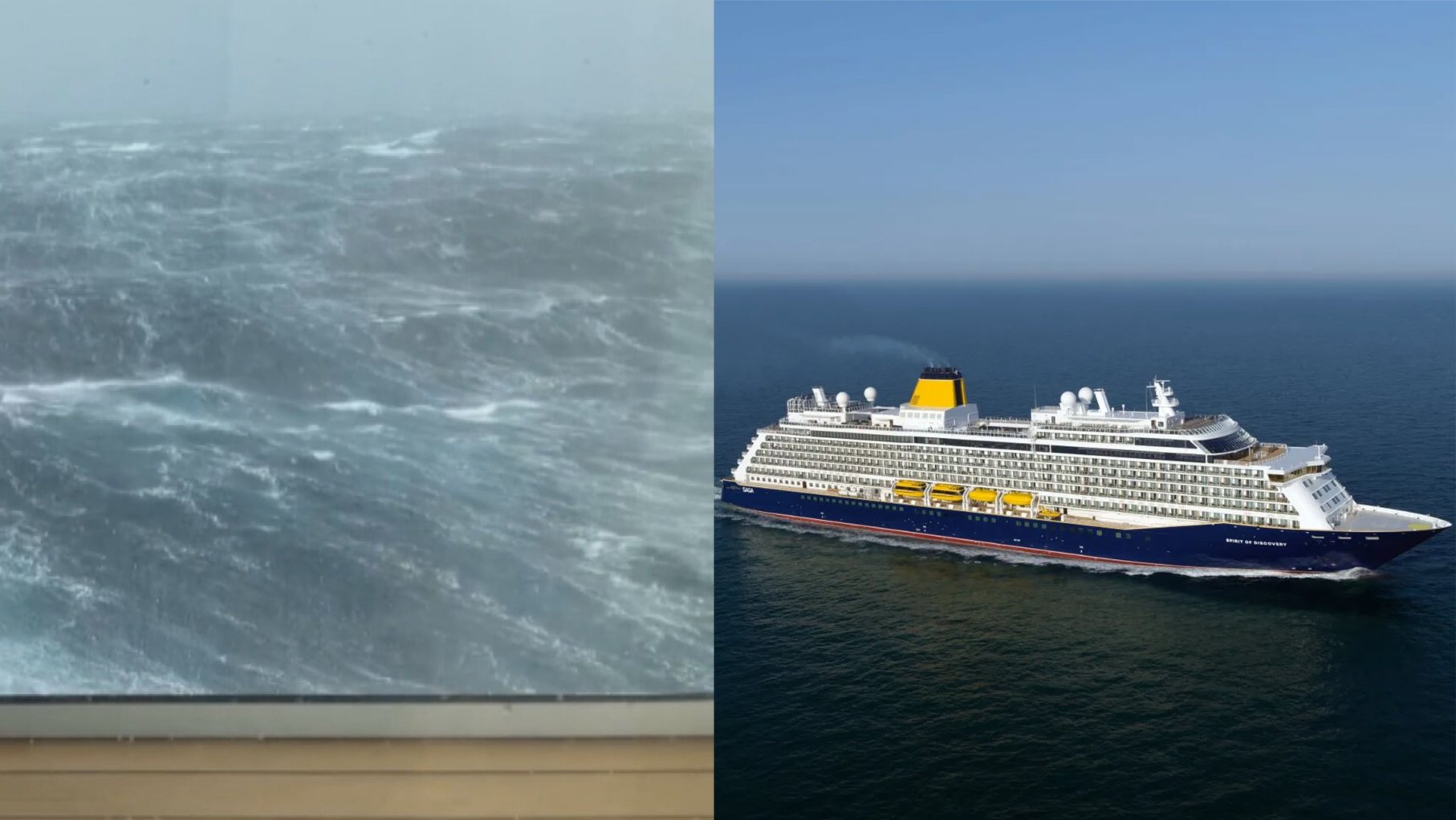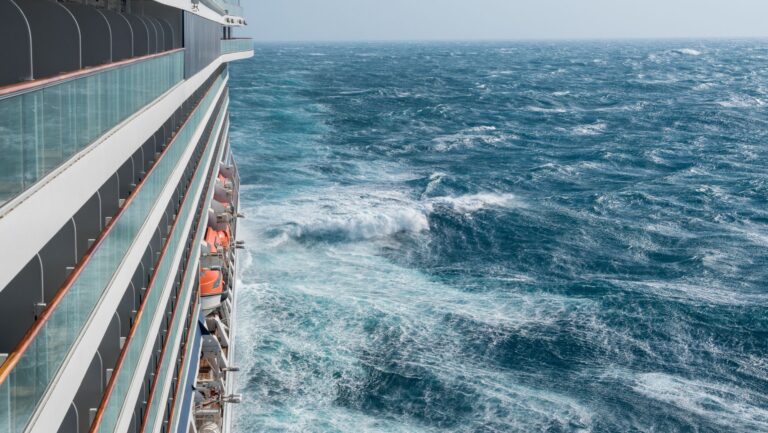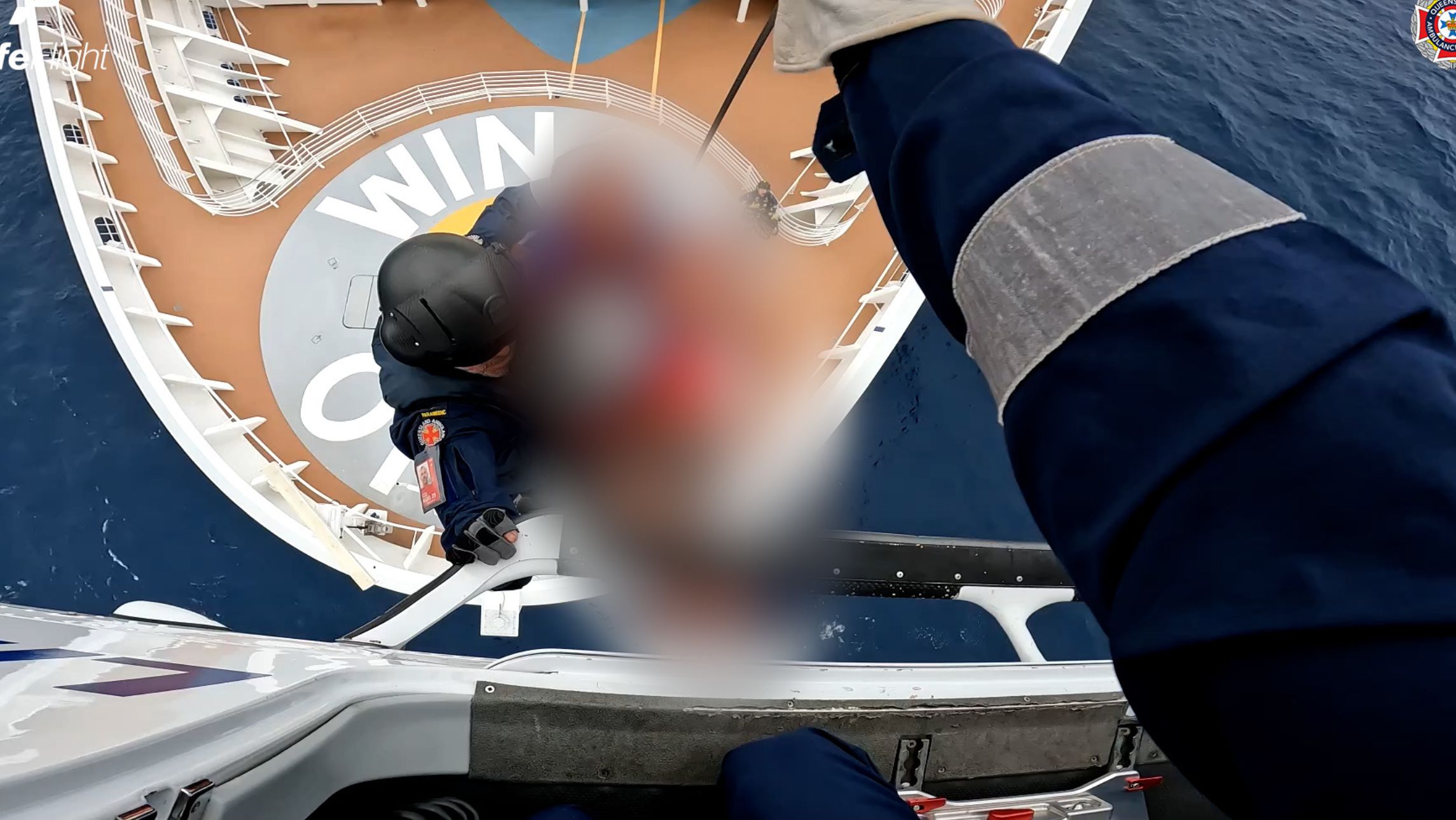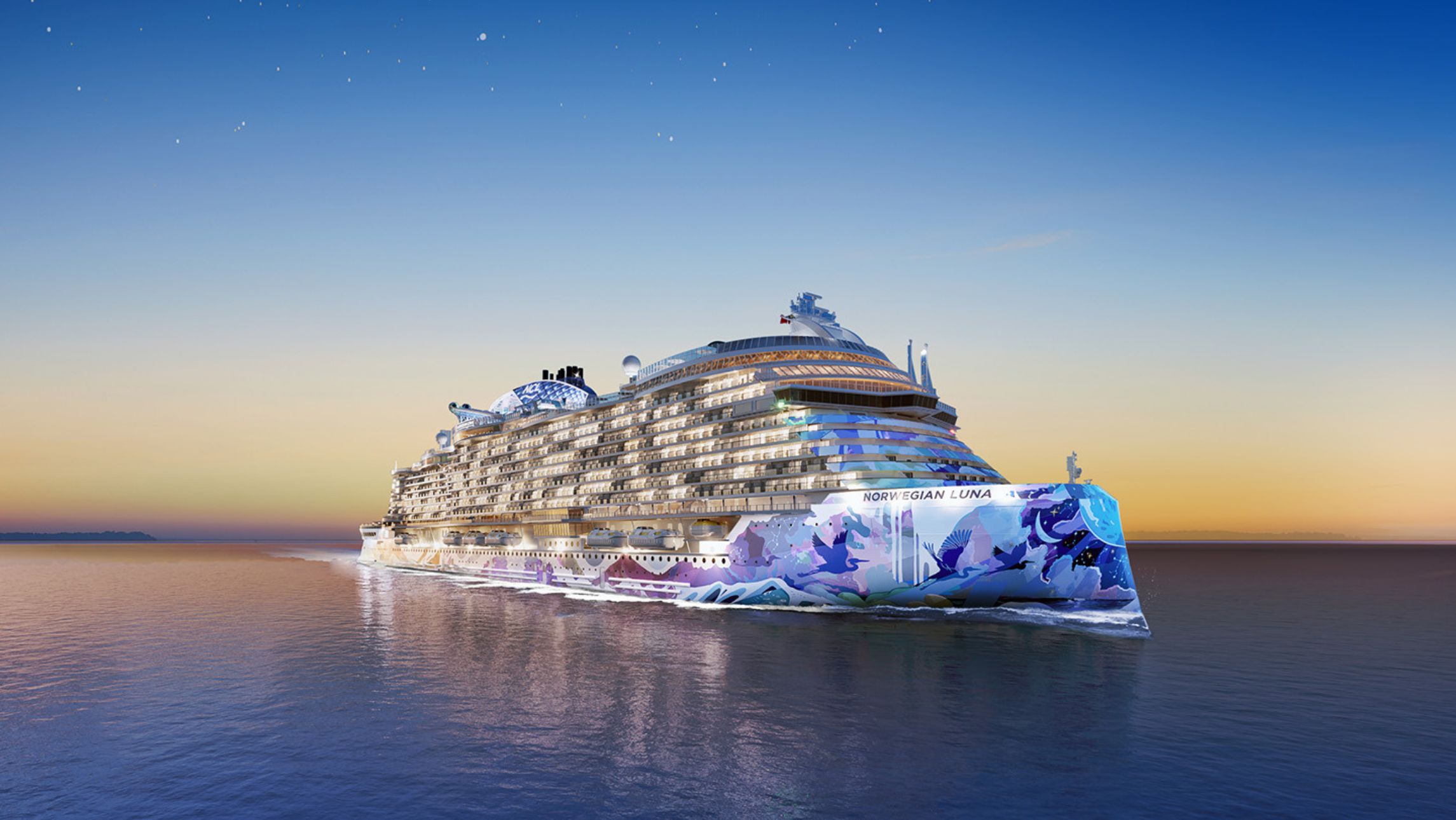- Crown Princess made headlines across the world after it tilted, with photos and videos revealing dramatic damage onboard.
- While no injuries were serious, some passengers were injured.
- This guide can help you ensure you know you’re safe on a cruise ship
The cruise ship Crown Princess captured worldwide headlines when it tilted while sailing through Milford Sound, with pictures and videos revealing the onboard damage and 13 passengers sustaining minor injuries.
Martin Wise, a passenger onboard described the experience to Stuff NZ: “I felt the boat starting to slant and tip. Then it lent over quite a bit and started moving along at a high speed and we could see the sea looking very high out of the restaurant windows.
“And crashing could be heard around the area and a huge crash from the kitchen.
“On a frightening scale, I’d put it at 8.5 to 10.”
While it certainly does sound frightening, and would hardly be a pleasant experience, there is some good news. Tilting on a cruise ship is incredibly rare, and when it does happen, due to the masterful construction of modern cruise ships, it rarely presents a serious cause for concern.
Statistically, many reports say that cruising is the safest form of travel, and of the few risks, a tilting or tipping cruise ship is one of the least likely.
How likely is it for your cruise ship to tilt?
Injuries from tilted cruising ships occur on less than 0.01% of all cruises, and injuries that are anything more than minor are extremely rare.
While it is a fact and a risk that cruise ships can commonly sail into unpredictable and unfavourable weather conditions, even though this can be unpleasant, it’s generally extremely unlikely to result in any sort of injury to passengers.
However, tilting does happen. Last November, Explorer of the Seas tilted, similarly sending plates and loose items flying.
However, the ship sailed without issue, continuing on course and reporting no major injuries. Similarly to Crown Princess, this incident demonstrated how cruise ship remain sturdy and steady even in the worst of conditions.

Tips for if your cruise ship is tilting
If you do find yourself in an experience where your cruise hits rough seas and the ship ends up tilting, there a few basic things you can do to help ensure the safety of yourself and others.
- The first is very simple, which is to remain calm. Try not to panic and listen calmly for cruise instructions, hysteria across the ship will only create more dangerous situations.
- As stated above, listen very closely to any crew announcements over the intercom, and follow any instructions immediately.
- Try and navigate the ship using the guardrails and handrails. This can allow you to keep upright and from falling as you make it back to your cabin or any other assigned emergency area.
- If the ship is in a heavy tilt, wait for a moment of stability before attempting to move to a different area of the ship.
- Pay attention to slippery surfaces, particularly near bathrooms or pools, as water may have flooded and will become a slipping hazard.
- If you are in your cabin, try and secure or place down any items that could fall and break, or fall and hit you.
- If you are near any deck or any edges, sit and crouch low to remove any risk of you falling over the side.
- Ships have an equilibrium point that is generally around the middle on a lower deck, this should be the most stable part of the ship. However, only make your way here if you can do safely.
- Safety starts at the beginning of your cruise, pay close attention to crew instructions and safety briefings on the first day of your cruise.
- While it’s a slightly different problem, if you are known to experience motion sickness, consult with a doctor before sailing about the best options for you. Experiencing motion sickness during turbulent moments on a ship will of course increase the stress of the situation and is bad for your general health.
How do cruise ships stay stable?
Cruise ships are built with something that is called a displacement hull design. This essentially means that the ship displaces an amount of water that is equal to the weight of the cruise ship, creating buoyancy that allows it to float.
The deeper and heavier sections of the ship that submerge beneath the water are designed to maximise stability.
Cruise ships also maintain a low centre of gravity through ballast tanks, which are large tanks that can fill with water when required. Furthermore, the heavy machinery and fuel centres of the ship are placed at the bottom of the ship, to further maximise stability, ensure the centre of gravity and support buoyancy.
Cruise ships also have specific stabilisers, which can be thought of as wings underwater, that work to keep the ship steady in rough weather conditions.
While the exact sciences of cruise ship construction can become complex, the key takeaway is that all modern cruise ships have state-of-the-art engineering that makes it an extremely safe way to holiday.
Another important point to note is that even older ships have access to newer navigation technology. The easiest way to avoid tilting is to avoid collisions or bad weather in the first place, and cruise ship captains have more technology than ever to achieve this.









